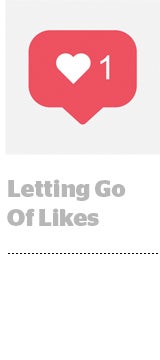If Instagram permanently removes public likes – a test that went global Thursday – it will greatly impact the influencer marketing industry by forcing influencers to embrace more sophisticated marketing metrics.
Marketers will push even harder to evaluate influencers based on clicks, view-through rates and swipe-up engagements with stories, said Daniel Schotland, chief operating officer at influencer marketing platform Linqia.
“A like or an engagement isn’t a business result,” he said.
But likes help brands select the right influencers and avoid fake followers and fraud. Agencies who have access to like counts through Instagram’s API will stand out from those who don’t.
“Manual work is going to get a lot harder if likes are removed from public profiles,” said Mae Karwowski, CEO and founder at influencer marketing agency Obviously.
The push for better metrics and insights will drive more business toward microinfluencers – people with large, loyal followings – rather than celebrities that get lots of likes, but don’t have a personal connection with their audience.
Here’s the rundown on three big ways influencer marketing will change without public likes.
More performance metrics
Social media managers obsess over likes, but they’re a “legacy metric,” said Tom Logan, co-founder of influencer marketing agency Cohley.
Likes signify engagement but can mislead when it comes to performance. Many people like content on Instagram just because others do, without any intention of buying anything.
Many marketers are now signing influencers to campaigns based not on likes, but on their conversion rates or aggregate video completion rates.
This tendency is particularly relevant with Instagram stories, Logan said. “A lot of users are just viewing stories and not doing the traditional scroll.”
Brands also value comments more than likes, where they can do sentiment analysis to understand positive or negative reactions to campaigns and how the brand is being perceived among an influencer’s audience.
“We do a lot of analysis of what people are actually saying when they’re talking about the content,” Karwowski said.
Influencer agency consolidation
Increased adoption of performance metrics means influencer agencies without technology and access to Instagram’s API will struggle – leading to consolidation.
Successful agencies will absolutely need to pull in granular data from Instagram, weed out an influencer’s fake followers and examine the ratio between likes, followers and video views.
If an influencer has 1 million followers but their posts only get a few thousand likes, something may be off, said Polina Haryacha, head of growth and business development at gaming influencer agency CloutBoost.
While agencies and brands can simply apply for access to Instagram’s API to continue receiving like counts, many don’t have the infrastructure to do so. A lot of agencies are hacking together reports in Google spreadsheets or relying on influencers to self-report on their own accounts.
“A lot of folks talk about having a platform, but really they have a UI on top of manually entered data,” Schotland said. “A lot of influencer [marketing] is talent management, not technology platform.”
As likes become less available, it will become more difficult for agencies without the ability to pull granular data from Instagram to do their jobs, professionalizing the space overall.
“It’s going to push the industry forward in a way that’s really positive,” Karwowski said.
The rise of microinfluencers and more diverse content
As marketers move toward more granular metrics, they’ll focus on working with influencers that really connect with their audiences and drive results, rather than those that just get a lot of likes on their posts.
That means working with 50 or more microinfluencers who reach 100,000 people each, rather than doing a blanket campaign with one person with 1 million followers and likes.
“We keep getting further away from the one-size-fits-all marketing campaigns of 30 years ago,” Logan said.
Without the pressure for likes, influencers will also feel freer to post content they enjoy, rather than engineering content to get the most engagement. That will cause creative on Instagram to get more diverse overall, and allow marketers to micro-target audiences with better creative.
“Influencers know that brands are closely watching their engagement rate,” Karwowski said. “It’s like everyone seeing your grades all the time.”
While most influencers are happy to have more creative freedom, those that are concerned about the removal of likes might be encouraged to try out other platforms, like TikTok, where they have more visibility.
“It’s a great opportunity for new social media networks to blossom,” Haryacha said.
















